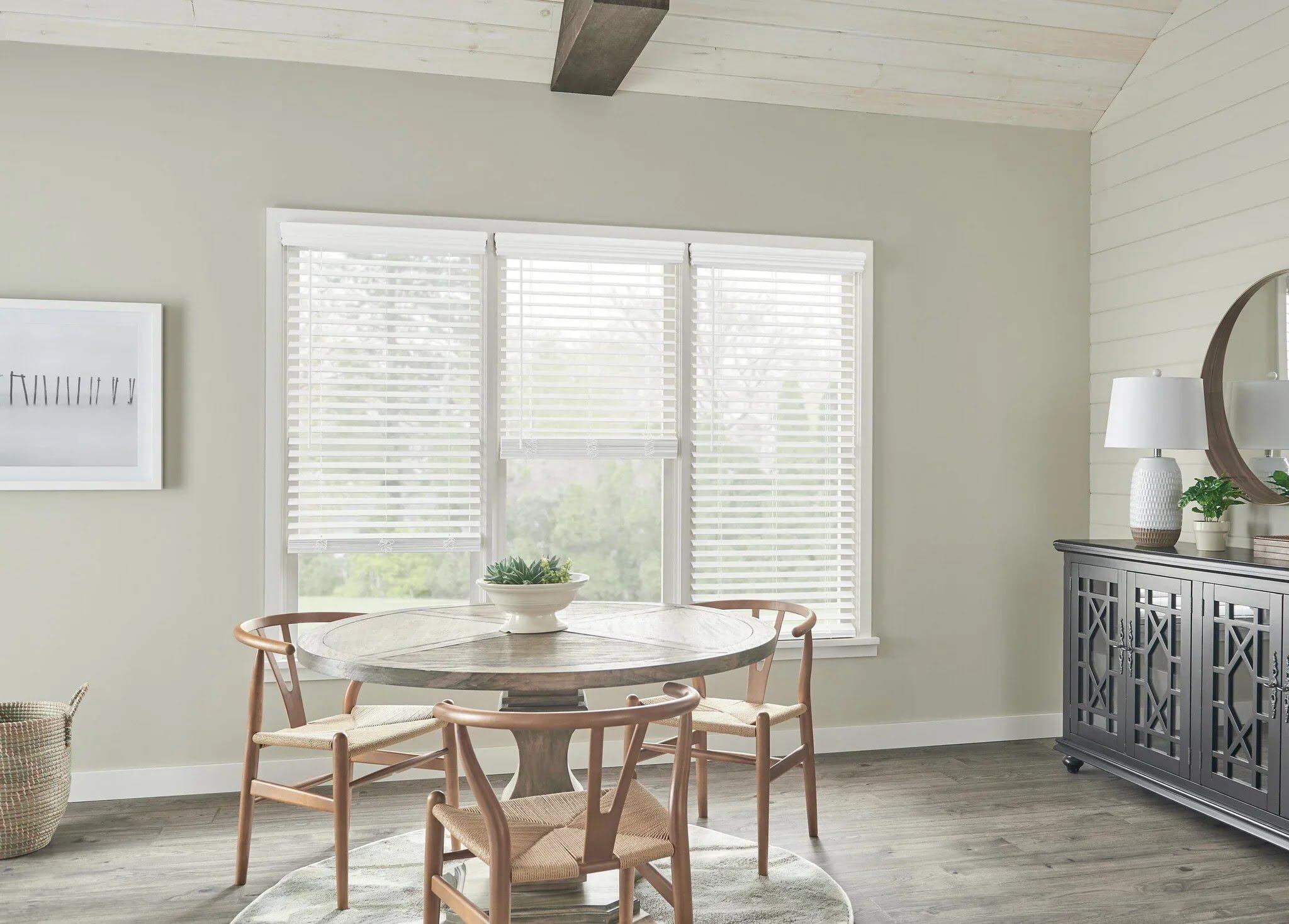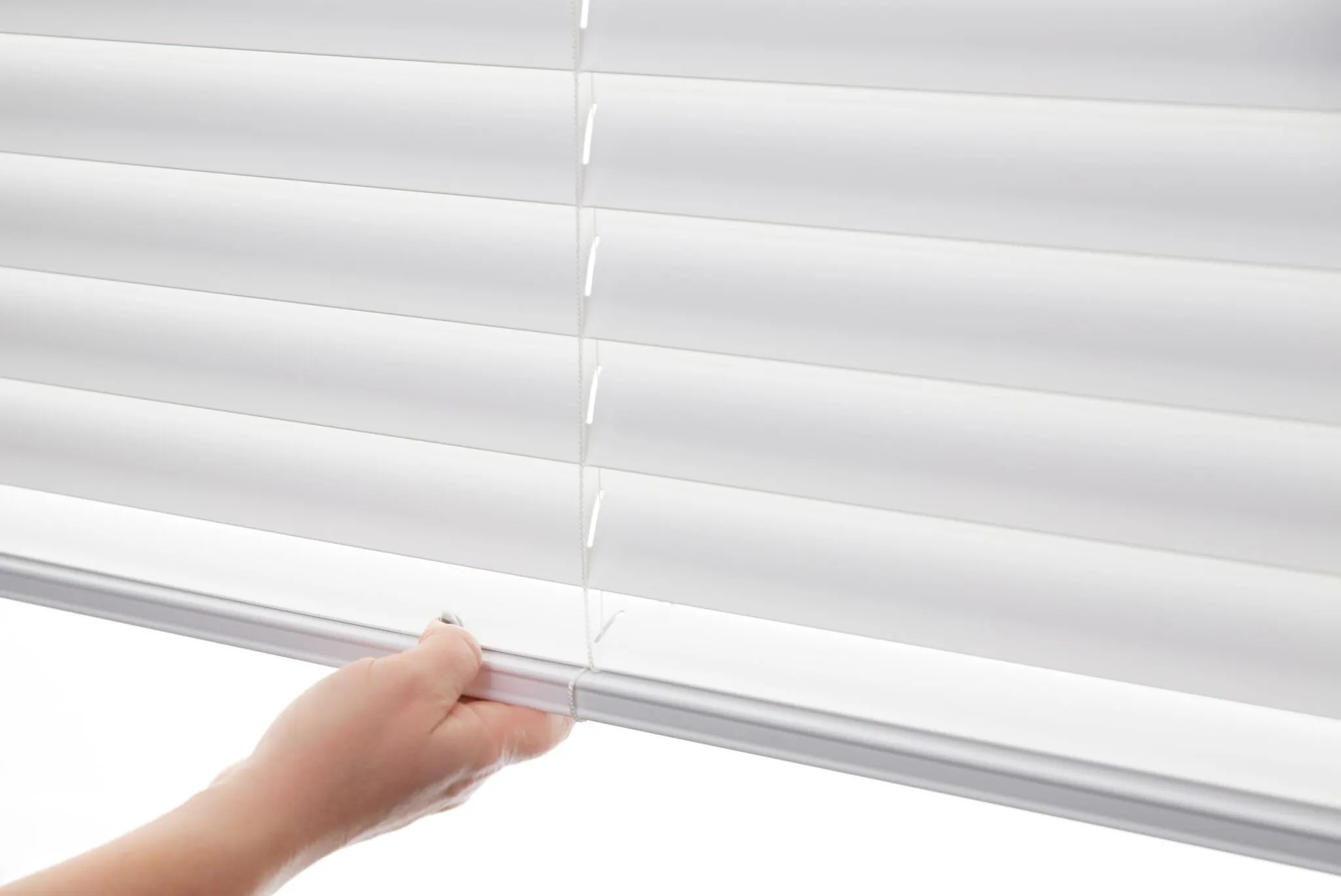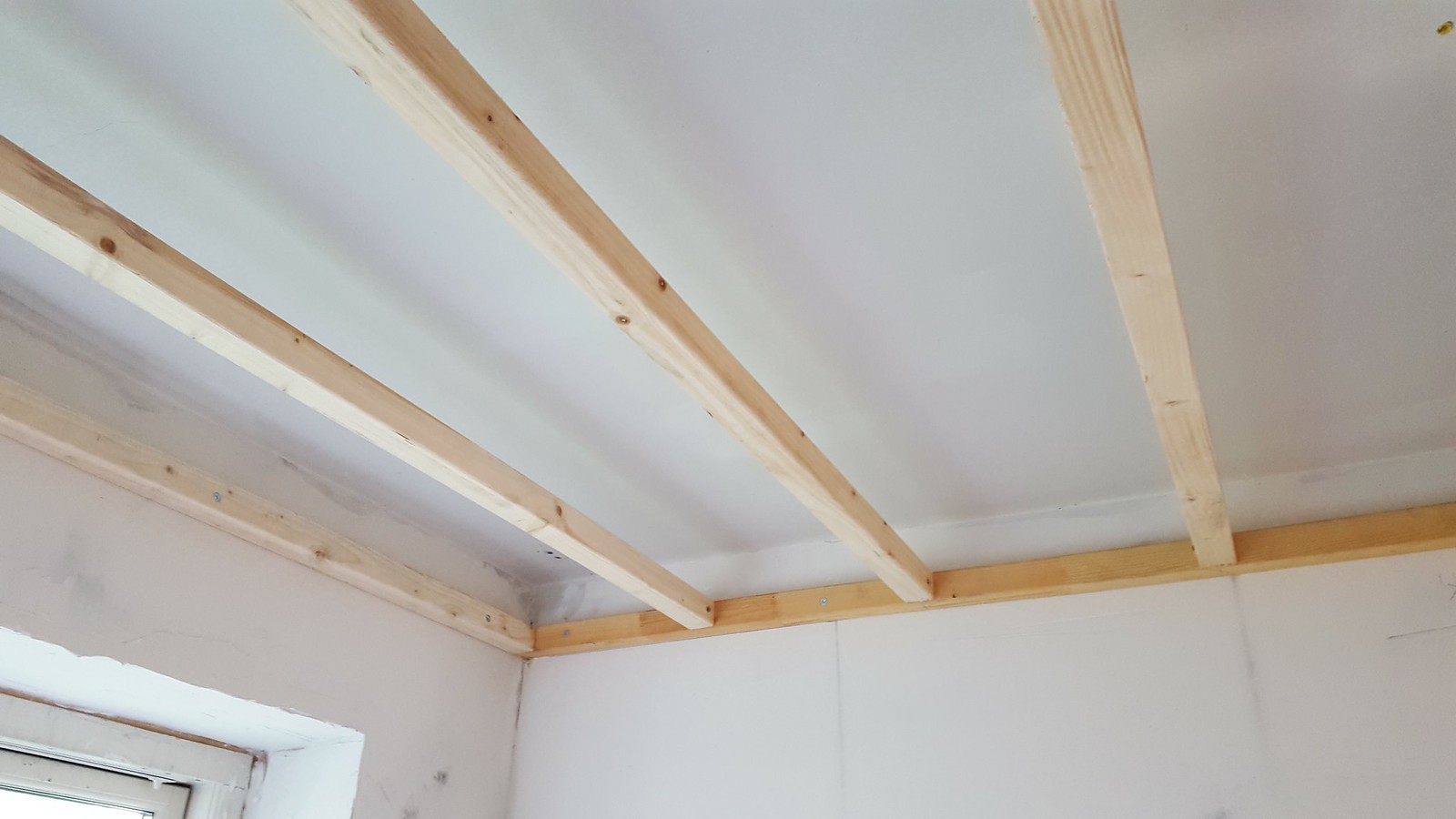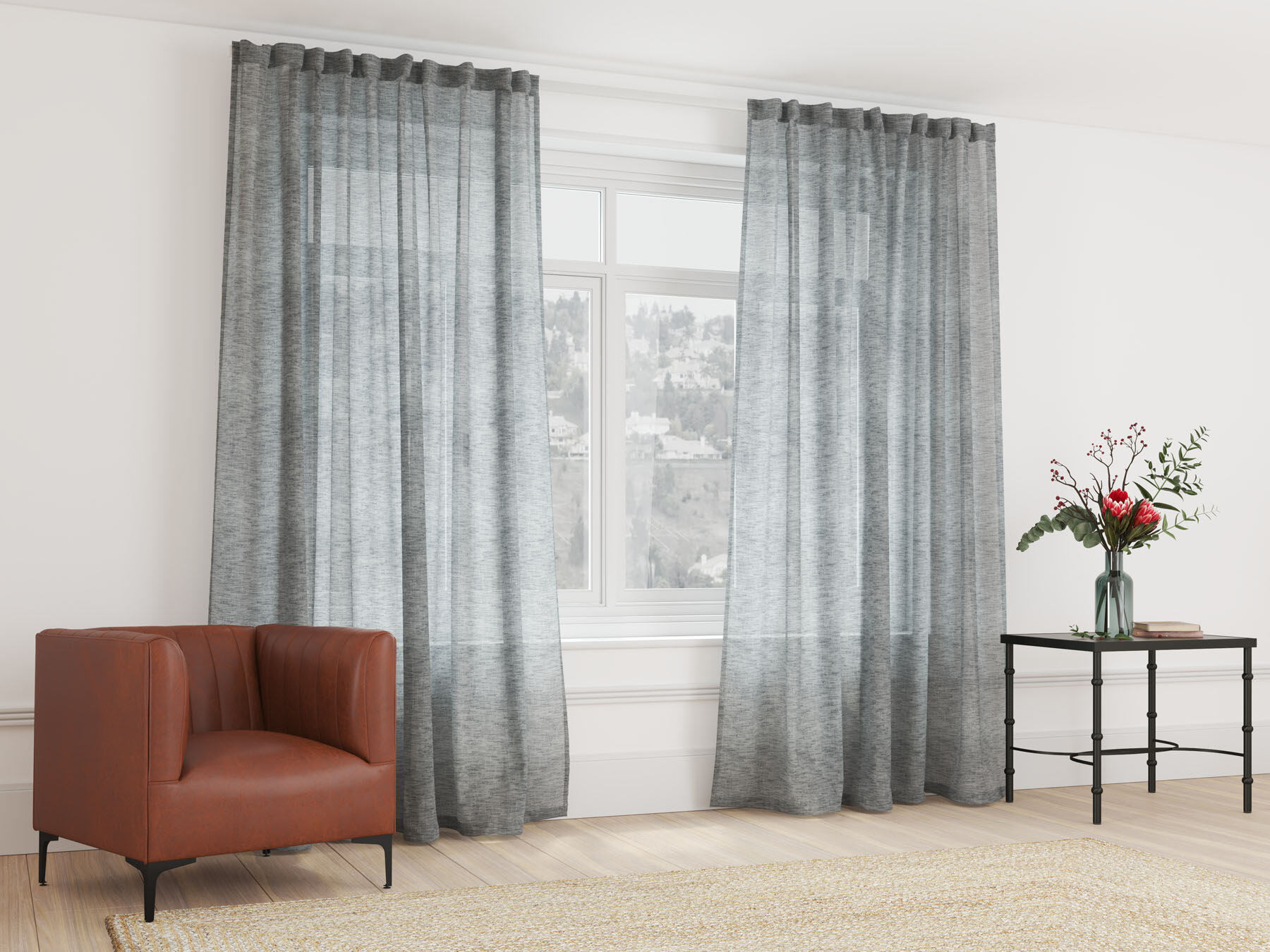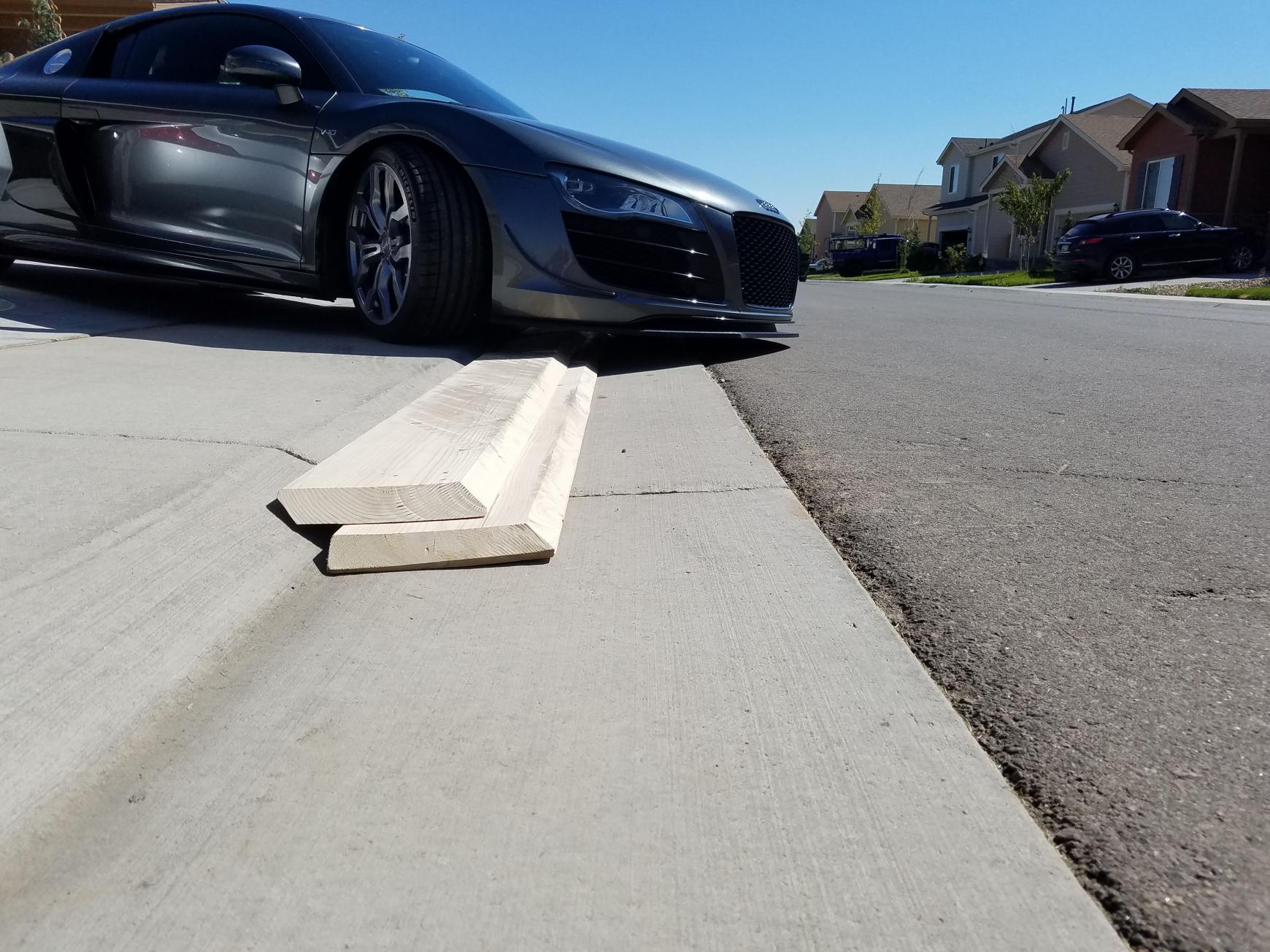

Articles
How To Lower Blinds
Modified: March 1, 2024
Discover effective articles on how to lower blinds and improve your privacy and control of natural light in your home. Implement these expert tips today!
(Many of the links in this article redirect to a specific reviewed product. Your purchase of these products through affiliate links helps to generate commission for Storables.com, at no extra cost. Learn more)
Introduction
Welcome to the ultimate guide on how to lower blinds! Blinds are an essential element of any window treatment, providing privacy, light control, and adding style to your space. Whether you’re looking to adjust the blinds for a better view, reduce the glare from the sun, or simply create a cozy ambiance, knowing how to lower blinds effectively is key.
In this comprehensive article, we will delve into the world of blinds, covering everything from choosing the right blinds to properly measuring for a perfect fit. We will explore the step-by-step process of removing blinds from the window and adjusting the slats to achieve the desired amount of light and privacy. Lastly, we will discuss essential tips and tricks for maintaining your blinds in top-notch condition.
So, if you’re ready to take control of your window treatments and enhance the functionality and aesthetics of your space, let’s dive in and learn how to lower blinds!
Key Takeaways:
- Understanding the different types of blinds and choosing the right one for your space is crucial for achieving the perfect balance of light, privacy, and style in your room.
- Properly measuring, removing, adjusting, and lowering blinds, followed by regular maintenance, ensures that your blinds not only function effectively but also contribute to the overall ambiance of your space.
Read more: How To Lower Graber Blinds
Understanding Blinds
Before we delve into the process of lowering blinds, let’s take a moment to understand the different types of blinds available in the market. Blinds come in various materials, styles, and mechanisms, each with its own unique features and benefits. By understanding the different types, you can make an informed decision when choosing the right blinds for your windows.
1. Vertical Blinds: Vertical blinds are made up of slats that hang vertically and can be adjusted to control light and privacy. These are often used for larger windows and sliding glass doors.
2. Horizontal Blinds: Horizontal blinds consist of slats that run horizontally and can be tilted or raised to control light and privacy. These are commonly used for standard-sized windows.
3. Roller Blinds: Roller blinds feature a single piece of fabric that can be rolled up or down to control light and privacy. These are popular for their simplicity and sleek appearance.
4. Wooden Blinds: Wooden blinds give a natural and warm look to any space. They are available in various finishes and are perfect for creating a cozy ambiance.
5. Pleated Blinds: Pleated blinds have a unique pleated concertina design that adds texture and style to any window. They are versatile and can be adjusted to control light and privacy.
Whatever type of blinds you choose, it’s important to consider factors such as the amount of light and privacy you desire, the style and color that complements your space, and the ease of operation.
Now that we’ve gained a basic understanding of blinds, let’s move on to the next step – choosing the right blinds for your windows.
Choosing the Right Blinds
When it comes to selecting the right blinds for your windows, there are several factors to consider. The right blinds can enhance the aesthetics of your space while providing the functionality you need. Here are some key aspects to keep in mind:
1. Window Size: Measure the size of your windows to determine the appropriate width and drop for your blinds. Additionally, consider the depth of your window frame to ensure that the blinds you choose will fit properly.
2. Light Control: Determine the level of light control you require. If you want complete darkness in a room, consider blackout blinds or shades. If you prefer diffused natural light, choose sheer or light-filtering blinds.
3. Privacy: Think about the level of privacy you need. If you are looking for maximum privacy, consider blinds with opaque materials or tightly closed slats. On the other hand, if privacy is not a primary concern, you can opt for sheer blinds or those with wider slat gaps.
4. Style and Décor: Consider the overall style and décor of your space. Blinds come in a variety of materials, colors, patterns, and finishes. Choose blinds that complement the existing aesthetics and enhance the visual appeal of your room.
5. Maintenance: Evaluate the maintenance requirements of the blinds. Some materials are easier to clean than others. If you prefer low-maintenance options, consider blinds made from materials such as PVC or aluminum.
6. Budget: Determine your budget for blinds. There is a wide range of options available with different price points. Consider the long-term durability and value for money when making your selection.
By considering these factors, you can narrow down your options and choose blinds that not only meet your functional needs but also enhance the overall aesthetics of your space. Once you have selected the perfect blinds, it’s time to proceed to the next step – measuring for a proper fit.
Measuring for Proper Fit
Ensuring that your blinds fit your windows properly is crucial for their functionality and appearance. Improperly measured blinds can result in gaps, uneven coverage, and a lack of privacy. To achieve a perfect fit, follow these step-by-step instructions:
1. Gather the necessary tools: You will need a measuring tape, a pencil, and a notepad to record your measurements.
2. Measure the width: Start by measuring the width of the window recess. Measure the width at the top, middle, and bottom of the recess and record the smallest measurement. This ensures that the blinds will fit snugly without any overlapping or gaps.
3. Measure the drop: Next, measure the drop of the window recess. Measure from the top of the recess to the sill or desired length. Again, measure at multiple points and record the smallest measurement.
4. Consider the mounting options: Determine whether you want to mount the blinds inside the recess or outside. Inside mount provides a sleeker appearance, while outside mount covers a larger area. Measure accordingly, taking into account any obstructions such as handles or window frames.
5. Add necessary deductions: If you opt for an inside mount, subtract a small deduction from the recorded width to allow for easy installation and operation. The specific deduction may vary depending on the type of blinds you choose, so refer to the manufacturer’s guidelines or consult a professional if needed.
6. Double-check the measurements: Before finalizing your measurements, double-check all the recorded figures to ensure accuracy. It’s always better to measure twice and order once to avoid any disappointments.
Once you have the accurate measurements, you can confidently proceed to purchase your blinds or consult a professional for further guidance. Remember, precise measurements are crucial to ensure a proper fit and achieve the desired results.
Now that you have the measurements in hand, it’s time to move on to the next step – removing the blinds from the window.
Removing Blinds from Window
Before you can adjust or lower your blinds, you may need to remove them from the window. This step is necessary when cleaning the blinds or making changes to the window area. Here’s a step-by-step guide to help you remove your blinds:
1. Prepare the area: Start by clearing the area around the window. Move any furniture or objects that may obstruct the process of removing the blinds.
2. Identify the mounting brackets: Inspect the top of your blinds and locate the mounting brackets. These are usually found on either end of the headrail and are used to secure the blinds to the window frame.
3. Release the blinds from the brackets: Depending on the type of blinds you have, there are different ways to release them from the mounting brackets. Most blinds have a spring-loaded mechanism that can be released by pushing up or down on a small tab or lever located on the bracket. This will release the blinds from the bracket and allow you to remove them from the window.
4. Remove the blinds from the window: Once the blinds are released from the brackets, gently lift them out of the window frame. Be careful not to damage the blinds or surrounding area as you remove them.
5. Set aside and store the blinds: After removing the blinds, set them aside in a safe and clean location. If you plan to reinstall them later, make sure to keep any necessary hardware or accessories together.
6. Clean and maintain the window area: With the blinds removed, take the opportunity to clean the window area. Remove any dust or debris from the window frame and wipe down the glass for a clear view.
Removing the blinds from the window is a relatively simple process that allows you to clean, make adjustments, or replace the blinds as needed. Now that you have successfully removed the blinds, let’s move on to the next step – adjusting the blinds slats.
When lowering blinds, always hold the bottom rail to guide them down smoothly and prevent them from slamming down. This will help to prolong the life of your blinds and keep them in good condition.
Read more: How To Lower Window Blinds
Adjusting Blinds Slats
Adjusting the slats of your blinds is an essential step in controlling the amount of light and privacy in a room. Whether you want to let in more sunlight or create a darker atmosphere, knowing how to properly adjust the slats will help you achieve the desired effect. Here’s a step-by-step guide:
1. Understand the tilt mechanism: Familiarize yourself with the tilt mechanism of your blinds. Most blinds have a wand or cord that controls the angle of the slats. The wand is typically located on the side of the blinds, while the cord may hang down from the headrail.
2. Adjust the slats: To tilt the slats, gently turn the wand or pull the cord in the appropriate direction. Tilt them upward to allow more light to enter the room or downward to obstruct the light and enhance privacy.
3. Experiment with the angle: Depending on your preferences, you can experiment with different slat angles to find the perfect balance. Be mindful of the direction of sunlight in your space to minimize glare and adjust the slats accordingly.
4. Maintain uniform slat alignment: Ensure that the slats are uniformly aligned for a clean and polished look. Use the wand or cord to adjust any slats that are out of place and create a consistent appearance.
5. Test the functionality: Once you have adjusted the slats to your liking, test the functionality by opening and closing the blinds. Ensure that the slats move smoothly and that the blinds can be easily controlled.
By mastering the art of adjusting the slats, you can create the ideal ambiance in your space. Whether you’re looking for a bright and airy room or a cozy and private retreat, adjusting the slats allows you to customize your blinds to suit your needs.
Now that you have learned how to adjust the slats, let’s move on to the next step – lowering the blinds.
Lowering the Blinds
Lowering the blinds is the final step in achieving the desired level of privacy and light control in your space. Whether you want to create a cozy atmosphere or simply block out the outside view, knowing how to lower the blinds properly is essential. Follow these steps to lower your blinds:
1. Identify the lift mechanism: The lift mechanism is what allows you to raise and lower the blinds. It can be in the form of a cord, a chain, or a wand. Locate the lift mechanism on the blinds.
2. Release the lock or safety mechanism: If your blinds have a lock or safety mechanism that secures the blinds in a raised position, release it. This will allow the blinds to lower freely.
3. Gently pull the lift mechanism downwards: Use the cord, chain, or wand to gently pull the lift mechanism downwards. This will lower the blinds to your desired height.
4. Stop at the desired height: Stop pulling the lift mechanism when the blinds have reached your desired height. The blinds should hang evenly and provide the level of privacy and light control you desire.
5. Secure the lift mechanism: Once the blinds are lowered to the desired height, secure the lift mechanism in its locked position. This will prevent the blinds from accidentally raising or lowering further.
It’s important to note that the exact method of lowering the blinds may vary depending on the type and brand of blinds you have. Refer to the manufacturer’s instructions for specific guidance.
By mastering the technique of lowering the blinds, you can effortlessly control the amount of light and privacy in your space. Whether you’re creating a cozy atmosphere in the bedroom or minimizing glare in the living room, adjusting the blinds to the perfect height will help you achieve your desired effect.
Now that you know how to lower the blinds, let’s move on to the final step – maintaining the blinds for long-lasting performance.
Maintaining the Blinds
To ensure that your blinds remain in optimal condition and continue to function properly, regular maintenance is essential. By incorporating a few simple cleaning and care practices into your routine, you can keep your blinds looking their best. Here are some tips for maintaining your blinds:
1. Dusting: Regularly remove dust from the blinds using a soft cloth, feather duster, or a vacuum cleaner with a brush attachment. Dust accumulation can dull the appearance of the blinds and affect their functionality.
2. Spot Cleaning: For stubborn stains or dirt, spot clean the affected areas using a mild detergent or a specialized blind cleaner. Gently wipe the stains with a clean cloth or sponge, being careful not to saturate the blinds with excessive moisture.
3. Avoid Excess Moisture: Blinds made of certain materials, such as wood or fabric, can be damaged by excessive moisture. Avoid direct contact with water or cleaning solutions that could warp, discolor, or degrade the blinds.
4. Lubrication: If the blinds use a cord or chain mechanism, periodically lubricate the moving parts with a silicone-based lubricant. This will ensure smooth operation and prevent any strain or damage to the mechanism.
5. Professional Cleaning: Consider professional cleaning for blinds that require more extensive care or have accumulated dirt and stains over time. Professional cleaners have the expertise and specialized equipment to effectively clean and restore blinds to their original condition.
6. Inspect for Damage: Regularly inspect the blinds for any signs of damage such as broken slats, frayed cords or chains, or malfunctioning components. Address any issues promptly to prevent further damage or safety hazards.
By incorporating these maintenance practices into your routine, you can extend the lifespan of your blinds and ensure they continue to provide the desired functionality and aesthetics for years to come.
With the maintenance tips covered, we have reached the end of our guide on how to lower blinds. By following the steps outlined in this article, you can confidently choose, measure, remove, adjust, lower, and maintain your blinds to achieve the perfect window treatment for your space.
Remember, blinds not only enhance your privacy and control the amount of light entering your room, but they also contribute to the overall style and ambiance of your space. So, take the time to choose blinds that reflect your personal taste, and enjoy the benefits they bring to your home or office.
If you have any further questions or need assistance with your blinds, don’t hesitate to consult a professional or reach out to the manufacturer for additional guidance. Happy blind lowering!
Conclusion
In conclusion, knowing how to lower blinds effectively is important for achieving the desired level of privacy, light control, and aesthetic appeal in your space. By understanding the different types of blinds available and choosing the right ones for your windows, you can enhance the functionality and style of your room.
Properly measuring for a perfect fit ensures that your blinds will sit seamlessly within the window frame, providing a polished look and maximum coverage. Removing the blinds from the window allows for easier cleaning and maintenance, while adjusting the slats gives you control over the amount of light and privacy in your space.
Lowering the blinds is the final step, allowing you to create the desired atmosphere and level of privacy. By maintaining your blinds through regular dusting, spot cleaning, and professional care when needed, you can extend their lifespan and keep them looking their best.
Remember, your blinds are not just functional window coverings; they contribute to the overall style and ambiance of your room. So, choose blinds that complement your decor and reflect your personal taste.
With the information provided in this comprehensive guide, you can confidently navigate the process of lowering blinds. However, if you have any specific questions or need further guidance, don’t hesitate to consult a professional or refer to the manufacturer’s instructions.
Now, armed with the knowledge on how to lower blinds, go ahead and transform your space into a stylish, comfortable retreat that perfectly suits your needs and preferences. Enjoy the benefits of your perfectly lowered blinds!
Frequently Asked Questions about How To Lower Blinds
Was this page helpful?
At Storables.com, we guarantee accurate and reliable information. Our content, validated by Expert Board Contributors, is crafted following stringent Editorial Policies. We're committed to providing you with well-researched, expert-backed insights for all your informational needs.




